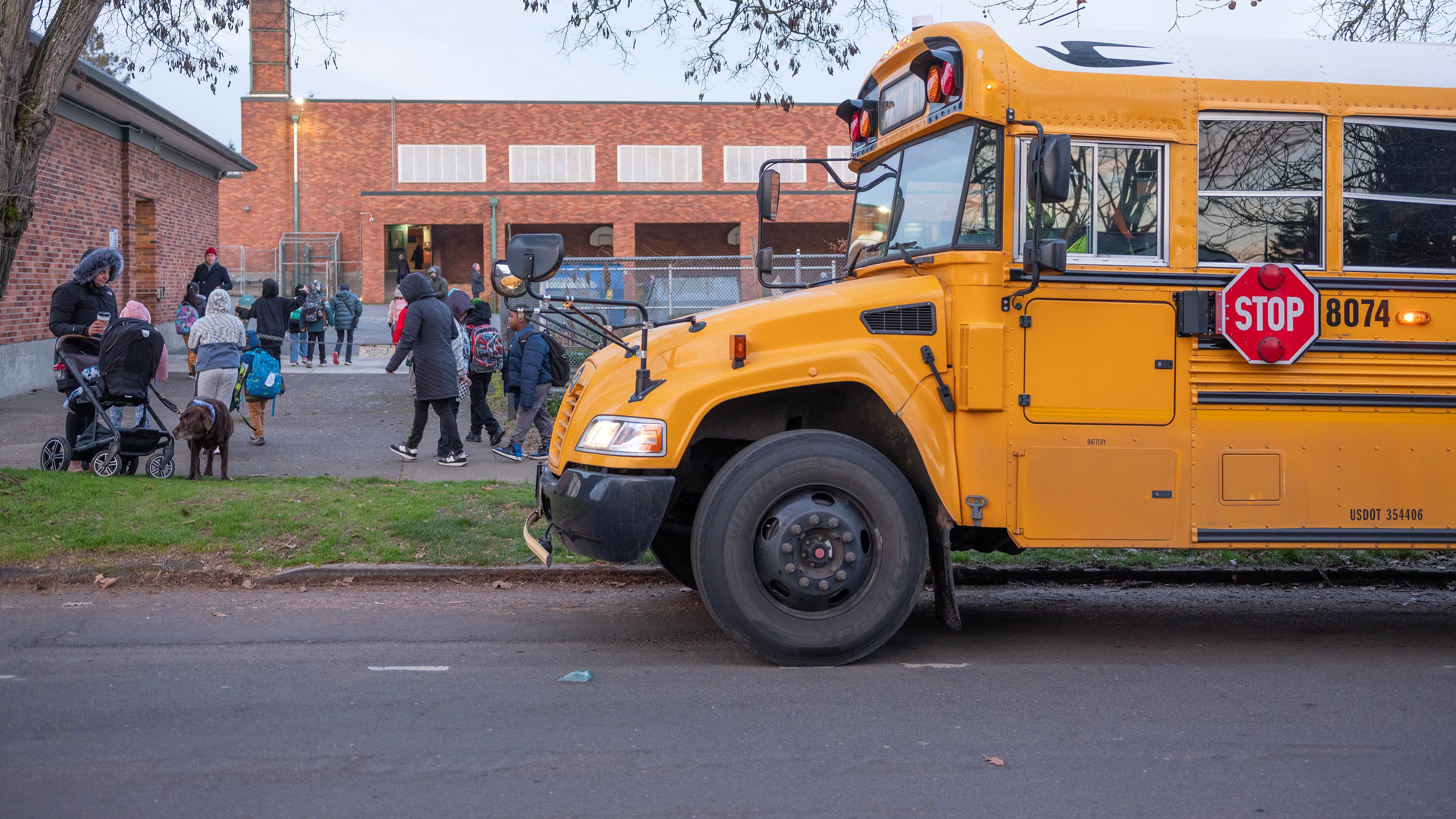Students in Oregon saw their reading and math scores decline over a decade when the state’s spending on schools rose by 80%, an analysis by Georgetown University shows.
The data, presented to the state Legislature’s Joint Ways and Means subcommittee on education Jan. 28, showed that increased spending from 2013 to 2023 correlated with lower student performance on the Oregon Statewide Assessment. The increase in spending, education finance researchers concluded, did not correlate with improvements in performance for any student group.
It’s no secret that Oregon students saw academic achievement slump dramatically—and never recover—during and after the COVID-19 pandemic. A study of 30 states by Harvard and Stanford universities on learning rebounds from the pandemic, released in early 2024, showed Oregon students were the only group that has failed to return to pre-pandemic levels in either reading or math skills.
Dr. Marguerite Roza, director of the Edunomics Lab at Georgetown, says Oregon has prioritized increasing spending, salaries and staff, but has not tracked the outcomes of such decisions. “When we spend this money and we don’t get the results, we need to change the course,” she says.
WHAT DOES THE ANALYSIS SHOW? Over the past decade, Oregon increased its education investment, with a sharp rise from the pandemic years up to 2023. The Edunomics Lab credits the jump to federal pandemic relief funds, especially from the U.S. Department of Education’s Elementary and Secondary School Emergency Relief Fund, which expired in December. That program gave $1.62 billion to the state. According to the Oregon Department of Education, 90% of that funding, or $1.48 billion, went directly to school districts.
That investment, combined with an ever-rising State School Fund and initiatives like the Student Success Act (a 2019 bill that increased education funding by tapping the corporate activities tax), means Oregon now spends $17,100 per student. Spending has far outpaced inflation.

At the same time, student performance has continued to decline. When comparing spending with both Oregon Statewide Assessment results and nationwide standardized assessments, the data paints a bleak picture.

On the statewide exam, 42.5% of students demonstrated proficiency in English and language arts, and 31% in math. Those scores are lower for Black and Hispanic students (see graphs above).
WW asked Roza to respond to the argument, often made by Oregon education officials, that test scores aren’t everything. “It’s not the case that every individual student’s test score is a perfect predictor of what they know or don’t know,” Roza says. “But in aggregate, these scores are telling us something about the health of our system, and I don’t know why we’re ignoring it.”
WHY THE GAP? Spending more on education does not automatically fix underlying problems, Roza says. Instead, the spending has to be intentional. In Oregon, Roza says, it’s not.
Like many other states, Oregon invested heavily in staff with pandemic relief money. But the increase in staff has also corresponded with a decline in outcomes. On the surface, this is puzzling. Good teachers are the “single most important ingredient” in a child receiving a quality education, Roza says.
But quality is more important than quantity, Roza says. “It’s really hard to get adults to change the way they teach, and some of them are just not good at it, and some of them are not even sure they want to be teachers anymore.”
There’s also the issue of tracking whether investments are working. Roza offers this example: If a district puts all its money into tutors but struggles with chronic absenteeism, then its tutoring investments won’t pay off. Instead, a better strategy might be to invest in a couple of attendance counselors.
“I don’t think [improvement] is as simple as a function, like if you insert this on the front end, you get this outcome,” she says. “The whole system has to be oriented to those outcomes and focused on continuous improvement and on solving what’s wrong.”
Other states have cracked the code, and Roza’s confident Oregon can, too.
Take Mississippi, she says: Education spending has shot up there about 54% in the past decade, up to $12,500 per student, but the state is laser-focused on outcomes. It reviews data quarterly and mandates its teachers partake in updated training. The state’s fourth graders outpaced the national average in reading and were among the top 10 states on a nationwide assessment, up 10 places from the year before. (Oregon, meanwhile, is in the bottom five.)
“It’s a slog,” Roza says. “It’s not some super-easy thing.”
ODE spokesman Marc Siegel says the department is “committed to ensuring spending aligns with outcomes” and is “looking closely at our state investments to ensure the funding is making a difference in student learning.”
HOW DID LAWMAKERS RESPOND? Members of the Ways and Means subcommittee were skeptical of the data presented. State Rep. Susan McLain (D-Forest Grove) took issue with using tests as the single measure for comparison. Students might have grown, she says, outside of testing environments.
State Sen. Lew Frederick (D-Portland) said he has relatives in Mississippi who are educators who say the state’s progress is overhyped. He urged his colleagues not to overreact.
“We have had a cycle of deciding what works and what doesn’t, and the thing that I have found in all those cycles is that we have a lot of things that are working. We need to add to those things that are working rather than say, well, nothing’s working, let’s throw this out,” he said. “Every time we do that, we have the system collapse and we have the students collapse.”
State Sen. Janeen Sollman (D-Hillsboro) was equivocal, noting Oregon’s success in some academic measures but not others.
“We shouldn’t shy away from these conversations,” she said. “Having this conversation doesn’t mean throw it all out and start from scratch. But we do have to look at comparative data, and we do have to look at a piece of that being test scores.”
